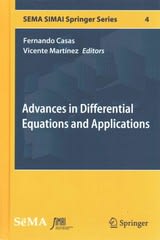Question
Weatherwise is a magazine published by the American Meteorological Society. One issue gives a rating system used to classify Nor'easter storms that frequently hit New
Weatherwiseis a magazine published by the American Meteorological Society. One issue gives a rating system used to classify Nor'easter storms that frequently hit New England and can cause much damage near the ocean. A severe storm has an average peak wave height of= 16.4 feet for waves hitting the shore. Suppose that a Nor'easter is in progress at the severe storm class rating. Peak wave heights are usually measured from land (using binoculars) off fixed cement piers. Suppose that a reading of40waves showed an average wave height ofx=16.7feet. Previous studies of severe storms indicate that= 3.5feet. Does this information suggest that the storm is (perhaps temporarily) increasing above the severe rating? Use= 0.01.
(a) What is the level of significance? State the null and alternate hypotheses.
H0:> 16.4 ft;H1:= 16.4 ft
H0:= 16.4 ft;H1:> 16.4 ft
H0:< 16.4 ft;H1:= 16.4 ft
H0:= 16.4 ft;H1:16.4 ft
H0:= 16.4 ft;H1:< 16.4 ft
(b) What sampling distribution will you use? Explain the rationale for your choice of sampling distribution.
The Student'st, since the sample size is large andis known.
The standard normal, since the sample size is large andis known.
The standard normal, since the sample size is large andis unknown.
The Student'st, since the sample size is large andis unknown.
What is the value of the sample test statistic? (Round your answer to two decimal places.) (c) Estimate theP-value. P-value > 0.250
0.100 <P-value < 0.250
0.050 <P-value < 0.100
0.010 <P-value < 0.050
P-value < 0.010
Sketch the sampling distribution and show the area corresponding to theP-value.
(d) Based on your answers in parts (a) to (c), will you reject or fail to reject the null hypothesis? Are the data statistically significant at level?
At the= 0.01 level, we reject the null hypothesis and conclude the data are statistically significant.
At the= 0.01 level, we reject the null hypothesis and conclude the data are not statistically significant.
At the= 0.01 level, we fail to reject the null hypothesis and conclude the data are statistically significant.
At the= 0.01 level, we fail to reject the null hypothesis and conclude the data are not statistically significant.
(e) Interpret your conclusion in the context of the application.
There is sufficient evidence at the 0.01 level to conclude that the storm is increasing above the severe rating.
There is insufficient evidence at the 0.01 level to conclude that the storm is increasing above the severe rating.
Step by Step Solution
There are 3 Steps involved in it
Step: 1

Get Instant Access to Expert-Tailored Solutions
See step-by-step solutions with expert insights and AI powered tools for academic success
Step: 2

Step: 3

Ace Your Homework with AI
Get the answers you need in no time with our AI-driven, step-by-step assistance
Get Started


